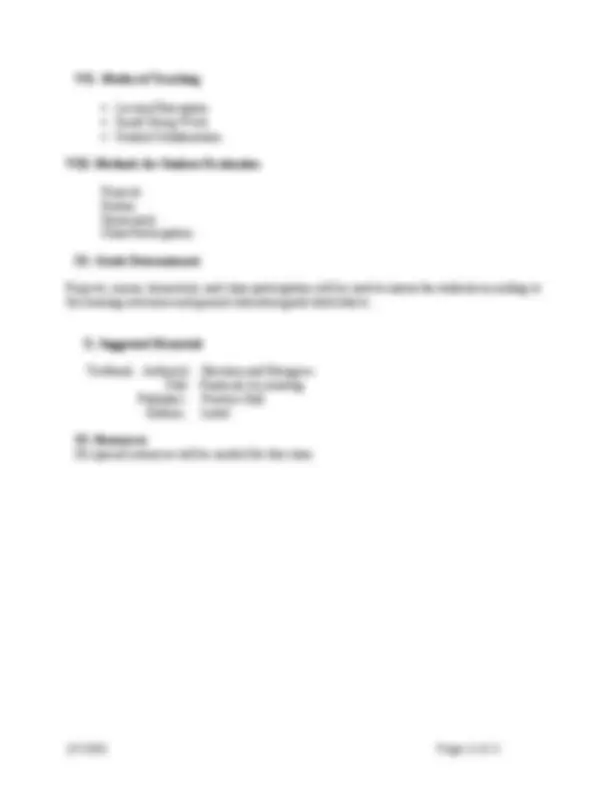



Study with the several resources on Docsity

Earn points by helping other students or get them with a premium plan


Prepare for your exams
Study with the several resources on Docsity

Earn points to download
Earn points by helping other students or get them with a premium plan
Community
Ask the community for help and clear up your study doubts
Discover the best universities in your country according to Docsity users
Free resources
Download our free guides on studying techniques, anxiety management strategies, and thesis advice from Docsity tutors
Material Type: Lab; Class: FINANCIAL ACCOUNTING; Subject: Accounting; University: Raritan Valley Community College; Term: Spring 2005;
Typology: Lab Reports
1 / 3

This page cannot be seen from the preview
Don't miss anything!


I. Basic Course Information
A. Course Prefix and Title: ACCT-101 Financial Accounting
B. Date: February 2005
C. Sponsoring Department: Business and Public Service
F. Semester Credit Hours: 4
G. Weekly Contact Hours: 4 Lecture 4 Laboratory 0 H. Prerequisites: None
I. Laboratory Fees: None
II. Catalog Description
This course explores the basic structure and concepts of accounting. Accounting processes for both service and merchandising enterprise, including the entire accounting cycle, are studied in depth. Emphasis is placed on preparation of worksheets, adjusting and closing entries and financial statements. Additional topics covered in detail are evaluation of inventories, deferrals and accruals, methods of depreciation, bank reconciliations, shareholder equity, bonds and payroll accounting.
III. Statement of Course Need
This introductory accounting course constitutes the foundation for all further study of accounting. Students will become familiar with accounting terminology, the language required to understand business communications. The course also satisfies the need for presentation of accounting principles affecting sole proprietorship.
IV. Place of Course in College Curriculum
Required in: AS Business Administration; Business Administration MIS AA General Business, Liberal Arts Option AAS Business Management, Accounting, Marketing, Real Estate, Office Administration Free Elective
As posted on NJ Transfer, this course transfers to most institutions as Financial Accounting or an elective.
V. Outline of Course Content
VI. General Education Goals and Student Learning Outcomes
General Education Goals Students will:
Learning Outcomes Students will be able to: